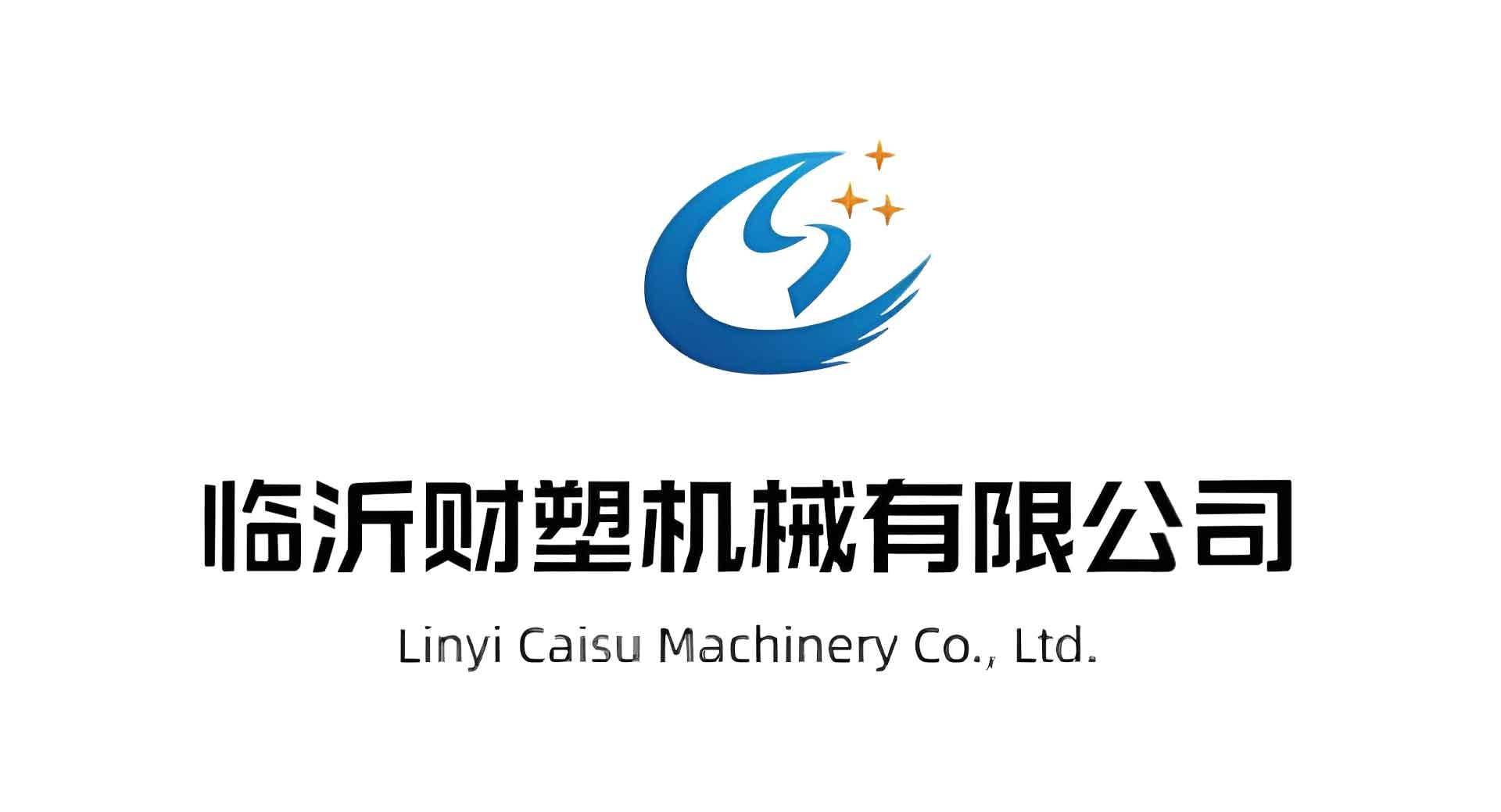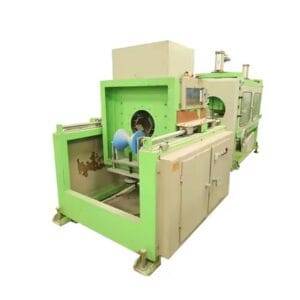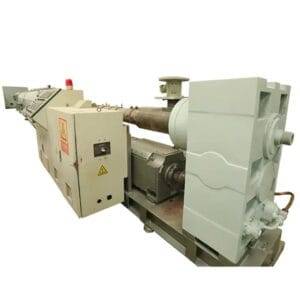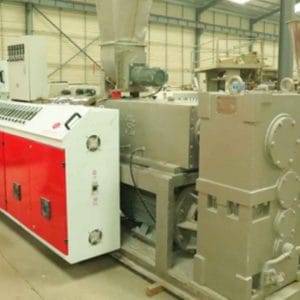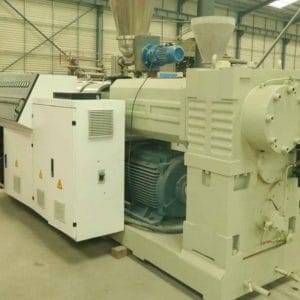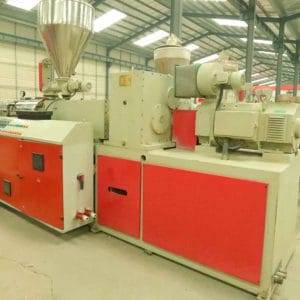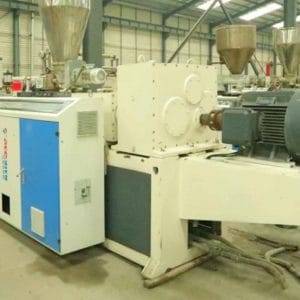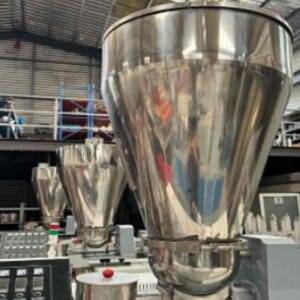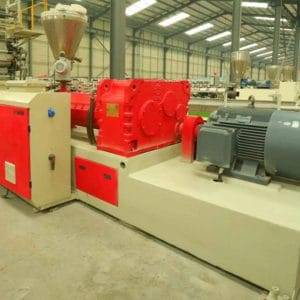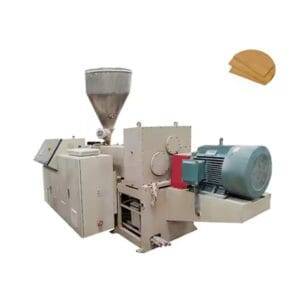Welcome to My Blog!
Before we dive into the content, I’d love for you to join me on my social media platforms where I share more insights, engage with the community, and post updates. Here’s how you can connect with me:
Facebook:https://www.facebook.com/profile.php?id=61567891941530
Now, let’s get started on our journey together. I hope you find the content here insightful, engaging, and valuable.
Caisu Machinery sells a variety of used plastic pipe production equipment. The products are of high quality and low price. Welcome to contact us for consultation and purchase. We will be happy to serve you.
Table of Contents
Introduction
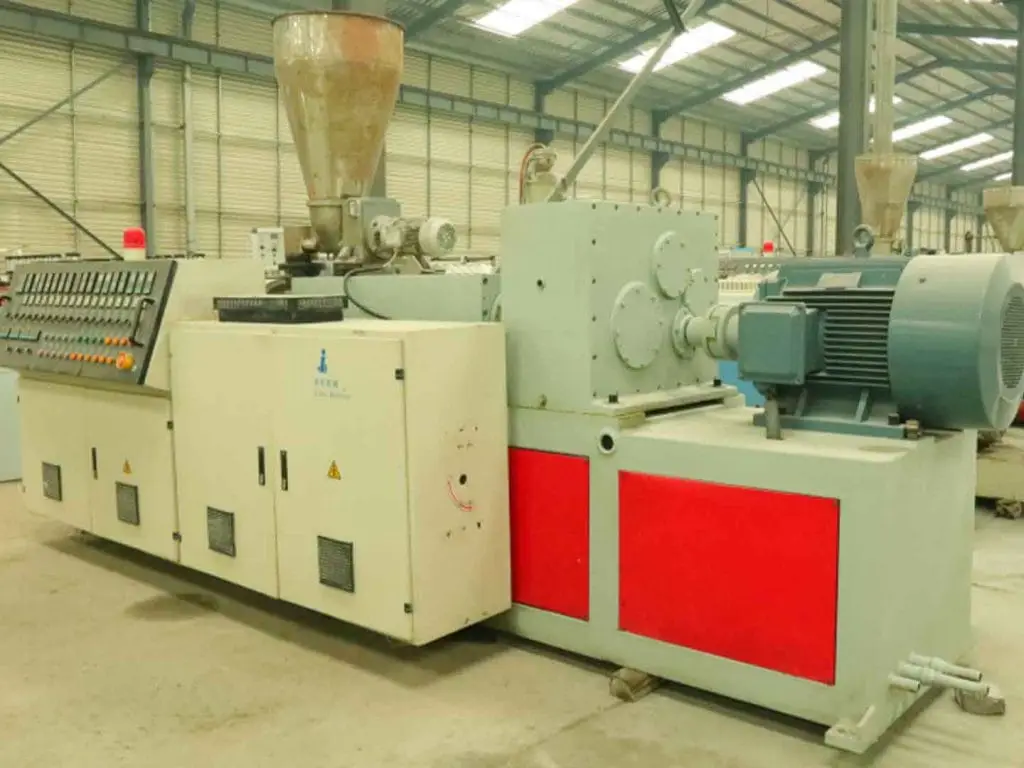
The PVC pipe production line is a crucial manufacturing system that produces durable and versatile polyvinyl chloride (PVC) pipes for various applications, including water supply, drainage, electrical conduits, and industrial fluid transportation. These pipes are known for their lightweight properties, corrosion resistance, and long service life, making them a preferred choice in many industries.
Understanding the components, working principles, and key considerations of a PVC pipe production line is essential for manufacturers to ensure efficient production and high-quality output. This guide explores the entire production process, equipment involved, factors to consider, and common questions related to PVC pipe manufacturing.
Components of a PVC Pipe Production Line
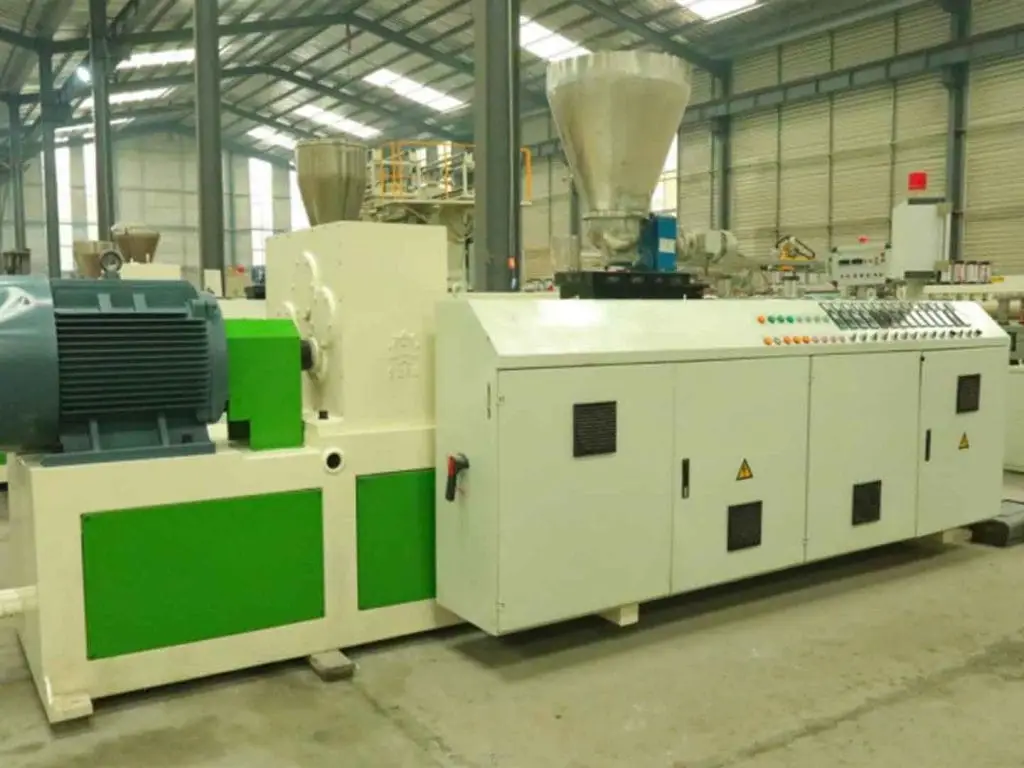
A PVC pipe production line consists of several machines and systems that work together to create high-quality pipes of different sizes and specifications. The main components include:
PVC Mixer
- Prepares the PVC compound by blending raw materials such as PVC resin, stabilizers, plasticizers, and lubricants.
- Ensures uniform mixing to enhance the consistency and quality of the final pipes.
Extruder
- The core machine of the PVC pipe production line, responsible for melting and processing the PVC compound.
- Equipped with a specialized screw and barrel system that ensures uniform extrusion.
Die Head and Mould
- Shapes the molten PVC material into a continuous pipe with precise dimensions.
- Determines pipe thickness, diameter, and surface characteristics.
Vacuum Calibration Tank
- Stabilizes and cools the extruded pipe using vacuum pressure and water spray.
- Ensures accurate dimensional control and smooth pipe surfaces.
Haul-Off Machine
- Pulls the PVC pipe along the production line at a controlled speed.
- Prevents deformation and ensures uniform pipe thickness.
Cutting Machine
- Cuts the pipes to the required lengths with precision.
- Can be fully automated to increase production efficiency.
Stacker or Belling Machine
- Stacks finished pipes for easy handling and packaging.
- Some production lines include a belling machine to create socketed ends for joint connections.
The PVC Pipe Manufacturing Process
The PVC pipe production line follows a step-by-step process to ensure efficient and high-quality output.
Raw Material Preparation
PVC resin is blended with additives such as stabilizers, lubricants, and fillers to improve processing and durability. The mixed material is fed into the extruder for further processing.
Extrusion Process
The PVC compound is heated and melted in the extruder, where a screw mechanism pushes it through a die head, shaping it into a continuous pipe.
Vacuum Calibration and Cooling
After extrusion, the pipe enters a vacuum calibration tank where it is cooled and solidified to maintain precise dimensions.
Haul-Off and Cutting
A haul-off machine controls the movement of the pipe through the production line, ensuring uniform thickness. The pipe is then cut into the desired lengths using an automated cutting system.
Final Processing and Packaging
The finished pipes undergo additional processing such as belling for joint connections. They are stacked, inspected, and packed for shipment.
Key Considerations When Choosing a PVC Pipe Production Line
When selecting a PVC pipe production line, manufacturers should evaluate various factors to ensure efficiency, quality, and cost-effectiveness.
Pipe Size and Specifications
- Determine the required pipe diameter and thickness based on industry needs.
- Choose an extrusion die and mold that match the desired pipe dimensions.
Extruder Type and Capacity
- Select an extruder with the appropriate screw design and output capacity.
- Twin-screw extruders are commonly used for PVC pipe production lines due to their superior mixing capabilities.
Cooling and Calibration Efficiency
- A high-quality vacuum calibration system ensures accurate pipe dimensions.
- Proper cooling prevents deformation and maintains structural integrity.
Automation and Control System
- Advanced control systems improve production efficiency and reduce manual labor.
- PLC (Programmable Logic Controller) systems provide real-time monitoring and adjustments.
Energy Efficiency and Operational Costs
- Opt for machines with energy-saving designs to minimize production costs.
- Regular maintenance reduces downtime and enhances machine longevity.
Comparison of Different PVC Pipe Production Line Configurations
The following table compares different configurations of PVC pipe production lines, highlighting their key characteristics.
| Feature | Single-Screw Extruder | Twin-Screw Extruder | High-Speed Extruder |
|---|---|---|---|
| Mixing Capability | Moderate | High | High |
| Output Capacity | Low to Medium | Medium to High | High |
| Energy Efficiency | Higher power consumption | Energy-efficient | Highly efficient |
| Application | Small to medium-sized pipes | Large-diameter pipes | High-speed production |
| Material Stability | Moderate | Excellent | Excellent |
Advantages of Using a PVC Pipe Production Line
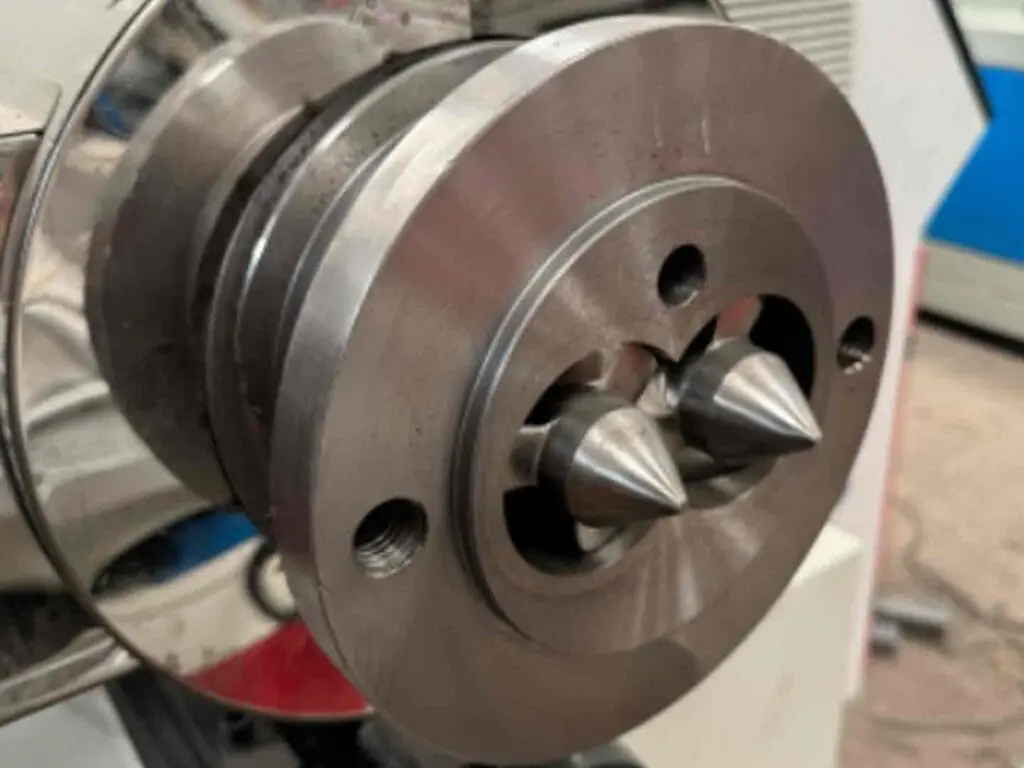

The PVC pipe production line offers several benefits to manufacturers and end-users.
High Production Efficiency
- Automated systems ensure consistent output with minimal human intervention.
- Faster production cycles lead to increased productivity.
Cost-Effectiveness
- PVC pipes are economical compared to metal or alternative plastic pipes.
- Lower maintenance and energy costs contribute to long-term savings.
Durability and Corrosion Resistance
- PVC pipes are resistant to rust, corrosion, and chemical degradation.
- Ideal for water supply, sewage, and industrial applications.
Environmental Benefits
- PVC is recyclable and contributes to sustainable manufacturing practices.
- Energy-efficient production lines reduce carbon footprint.
Conclusion
The PVC pipe production line is an essential system for manufacturing high-quality PVC pipes used in various industries. Understanding its components, manufacturing process, and key considerations helps manufacturers optimize efficiency and output.
By selecting the right extrusion system, maintaining quality control, and adopting energy-efficient solutions, businesses can enhance production capacity and meet market demands effectively.
FAQ
What is a PVC pipe production line?
A PVC pipe production line is a manufacturing system that processes raw PVC materials into finished pipes using extrusion, calibration, cooling, cutting, and stacking processes.
What are the main components of a PVC pipe production line?
The production line includes a mixer, extruder, die head, vacuum calibration tank, haul-off machine, cutting machine, and stacker.
How does a PVC pipe extruder work?
The extruder melts and shapes PVC materials using a rotating screw and heating elements before passing the material through a die to form the pipe.
What factors affect the quality of PVC pipes?
Key factors include raw material composition, extruder performance, cooling efficiency, and precision in cutting and calibration.
What is the difference between a single-screw and twin-screw extruder?
A single-screw extruder is suitable for small-scale production, while a twin-screw extruder offers better mixing and higher output for large-scale manufacturing.
How can I improve the efficiency of my PVC pipe production line?
Optimizing machine settings, ensuring proper maintenance, using high-quality raw materials, and adopting automation can enhance efficiency.
